Here are the Android Pie update changes and launch dates
Android Pie is the official name of Google's Android P operating system, and the final software is now available on Pixel phones and the Essential Phone today and coming to additional devices throughout this year and next year.
It's a feature-filled Android 9 Pie update, with design changes, helpful shortcuts, and a big focus on AI through adaptive settings. Google is trying to make your phone more personal, more efficient, and easier to use.
We have a full Android Pie features list below, along with a phones list, detailing which devices are compatible. The Android Pie release date will be staggered for many people, with manufacturers like Samsung, LG and others (and in the US, the carriers) required to tweak the software. Android Pie may launch in 2018 for some, but in many cases, you'll have to wait until 2019.
Now that the Android P beta is over, let's move onto what you'll see with Android Pie starting today – if you're holding a Pixel phone.
Cut to the chase
What is Android Pie? It's Android 9, the newest version of Android
When can get you Android Pie? Today on Pixel phones, 2018-2019 for others
How much will Android Pie cost? It will be a free update
 |
| android-pie-9-features-release-date-and-phones-list-scroll-less-charge-less-top-less |
Android Pie release date
This... is complicated.
Android Pie release date: Now (today)
You can download the Android Pie today on Pixel phones via a free over-the-air update. It's 'rolling out', according to Google so you might not see it right away as others hammer the Android 9 server.
The Essential Phone is also getting Android 9 Pie starting today, Essential announced, 'We’re proud to bring Android 9 Pie to Essential Phone the same day it’s released! Check your phone now for the update. 🥧'
- Google Pixel 2
- Google Pixel 2 XL
- Google Pixel
- Google Pixel XL
- Essential Phone
Android Pie release date: Soon (by December 21)
Good news for Sony, Xiaomi, HMD Global, Oppo, Vivo, and OnePlus users as well as qualifying Android One devices. Google says that these companies, which all participated in the Android Pie beta along with Essential, will issue the update by the end of autumn (so before Friday, December 21).
- Sony
- Xiaomi
- HMD Global
- Oppo
- Vivo
- OnePlus
- Select Android One phones
Android Pie release date: Later (2018-2019)
What about an Android Pie release date for Samsung, LG, Motorola and other phones? We expect many other manufacturers to announce launch dates over the course of the next several months and into next year, as per usual. This is typical of Android updates, especially in the US where carrier approval is required.
There's one more set of devices that could get Android Pie early: the rumored Google Pixel 3 phones, which we suspect will launch in October (October 4 to be specific). All of the Pixel 3 phones are still unannounced.
Onto the major Android Pie features.
Adaptive Battery Life
Android Pie has been designed to give you a more consistent battery by using on-device machine learning to figure out which apps you'll use in the next few hours and which you won't use until later if at all today.
With 30% reeducation in CPU app wake-ups for apps, adaptive battery helped us eke out a few more hours of device use when we tested it. And now the software is final, so it should be even better.
Adaptive Brightness
Current auto-brightness settings aren't good enough, according to Google, and that's why it's giving phone makers a more power efficient way to calibrate phone screen brightness based on both the environment and learned behavior.
Google calls this adaptive brightness and claims that 50% of users who tested this Android Pie feature have stopped manually adjusting the brightness because of it. Even if you still reach to manually adjust the brightness, overall, you should be doing it less. That's what we experiencing when running Android Pie on a Pixel 2.
App Actions
Google is inserting more prediction tools into its app drawer. Previously, you'd see a top row of predicted apps, normally based on your usage history. That was helpful.
Android Pie goes a step further with app actions that predict what you'll do next, and these shortcuts sit in a row right underneath the predicted app icons. This boils down to shortcuts for calls, or a run routine based on the fact that you just plugged in headphones and run every day at this time with an app like Strava. It's like Android Pie is reading your mind.
App Slices
You won't see app slices until later this year, but Google has issued an API to developers to create more shortcuts around its operating system interface. This is starting in search, of course (after all, this is Google, we're talking about).
The best example at Google IO was with the ride-hailing app, Lyft. Searching for 'Lyft' will provide the app as an answer, but also shortcuts to your top destinations, like work and home, each with a price already listed. It's saving you from having to go into the app menus in order to select these options.
App slices via the search bar can extend to Google Photos, too. If you look up Hawaii, you'll see photos from a vacation, for example, and checking into a hotel may soon be easier when you look up your hotel name. Instead of having to wade through the clunky third-party app, you may be able to just select 'check-in'.
Android Pie Navigation Changes
Android Pie has a new system navigation interface in order to make multi-tasking easier to understand, with a single clean home button. It's very much an iPhone X horizontal bar to replace the typical home and recent buttons.
This is part of Google's plan to make the UI simpler and adapt to the all-screen phone designs out there. It's more approachable to new users, according to Google.
You can swipe up from the bottom anywhere in the operating system to see recent open apps as well as five predicted app at the bottom of the screen to save you time. Swiping up a second time and you'll see your app drawer. With this one-two swipe gesture, Google has essentially combined the all-apps and overview spaces gesture into one.
You can do one better than Apple's iPhone interface. Android Pie will let you scroll through all of your apps very quickly by sliding right and left with the horizontal bar at the bottom. It's like a video you're scrubbing through, but for app selection.
Form our experience, it takes time to get used to the navigation changes (as do almost all software changes), but retraining your brain for Android Pie is worth it in the end. Everything feels intuitive.
Volume slider and screen rotation fixed
The volume slider has moved again, and this time it's off to the right side near the volume rocker. That makes sense, but it does more than just get a new home.
Pressing the volume keys will now adjust the media volume instead of sometimes (but you're not quite sure when) controlling the ringer volume. The ringer can be turned on and off through a software toggle button when you adjust the volume. Your reaction may be like ours: "Why wasn't it always this way?!"
You can also now manually control screen orientation. This is done via a pop-up icon that appears when you rotate the screen. You won't have to rely on the phone to (often mistakenly) rotate the screen for you.
Android Pie 'Digital Wellbeing'
It's no secret that we use our smartphones too much, and you probably do, too (you are on a technology website, after all). But how much time?
Digital Wellbeing is supposed to aid you in understanding what you're spending too much time on so that you can adjust your behavior.
It even comes with an app timer and to send you notifications when you cross a self-imposed threshold, and a new Shush feature is launching as a Do Not Disturb shortcut when you turn your phone over on its front face. In addition to silencing alarms, it won't even display visual notifications.
Think of Google as eliminating both audible and visual noise from your life when these modes are enabled.
Making room for more Android notch displays
Android Pie makes room for notched displays, and we've seen a lot of them on new Android phones in the last few months – pretty much everyone but Samsung.
 |
| Small notch |
 |
| Medium notch |
 |
| iPhone X-sized notch |
The use of a notch cutout means that some of Android's standard interface staples have shifted.
Looking for the time? It's now on the top left corner of the screen. App notification icons pile next to it, which could get dicey if A.) you use a lot of apps, or B.) your next Android phone has a notch (Google has planned ahead for this, thankfully.)
Some other design changes we noticed: Text is more sharp, there's generally more color in the menus, transition animations have been touched up, and some stuff has been moved around. It looks and feels fresh, even in this very early software build.
Ambient Display has been overhauled, at least compared to what came before it on Pixel XL and what currently exists on the latest Pixel 2 XL Oreo software. The date and day of the week no longer display underneath the time, but it still displays app notification icons.
 |
| You'll have to squint to notice this welcome improvement |
The biggest change here is that down at the screen's bottom, it displays the battery percentage, so that you don't have to wake it to know whether you need to plug in or not. We look forward to Google making more updates to Ambient Display as the dev preview continues.




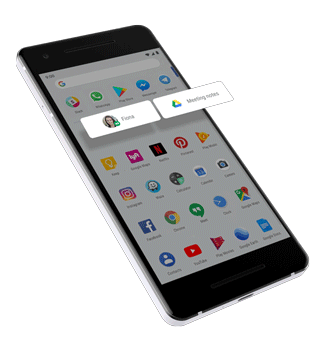
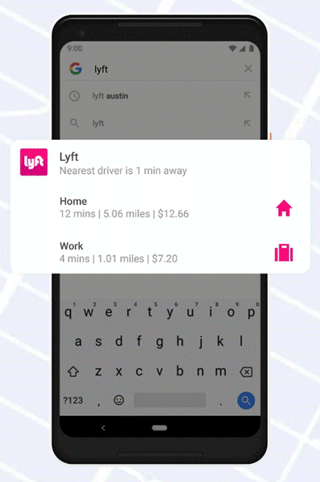


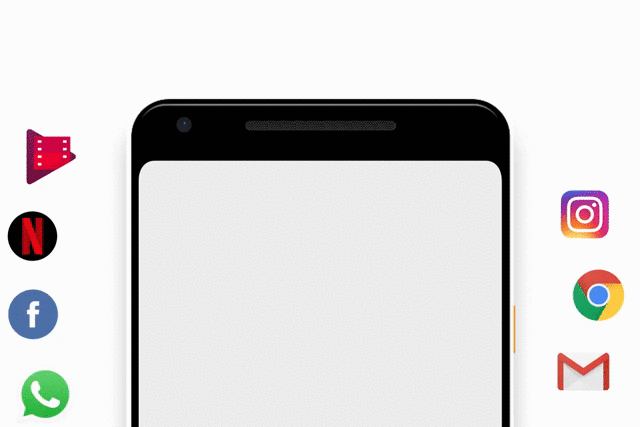
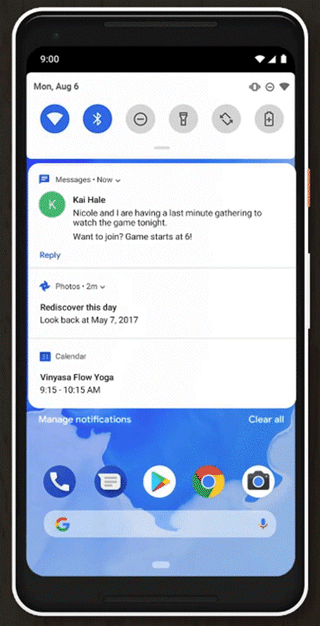
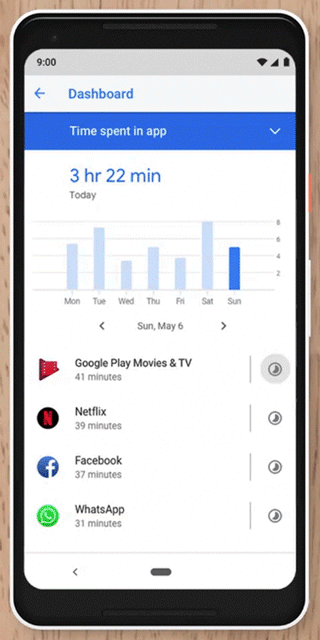







Very nice post, i certainly love this website, keep on it
ReplyDeleteProfile.ameba.jp
Website
Information